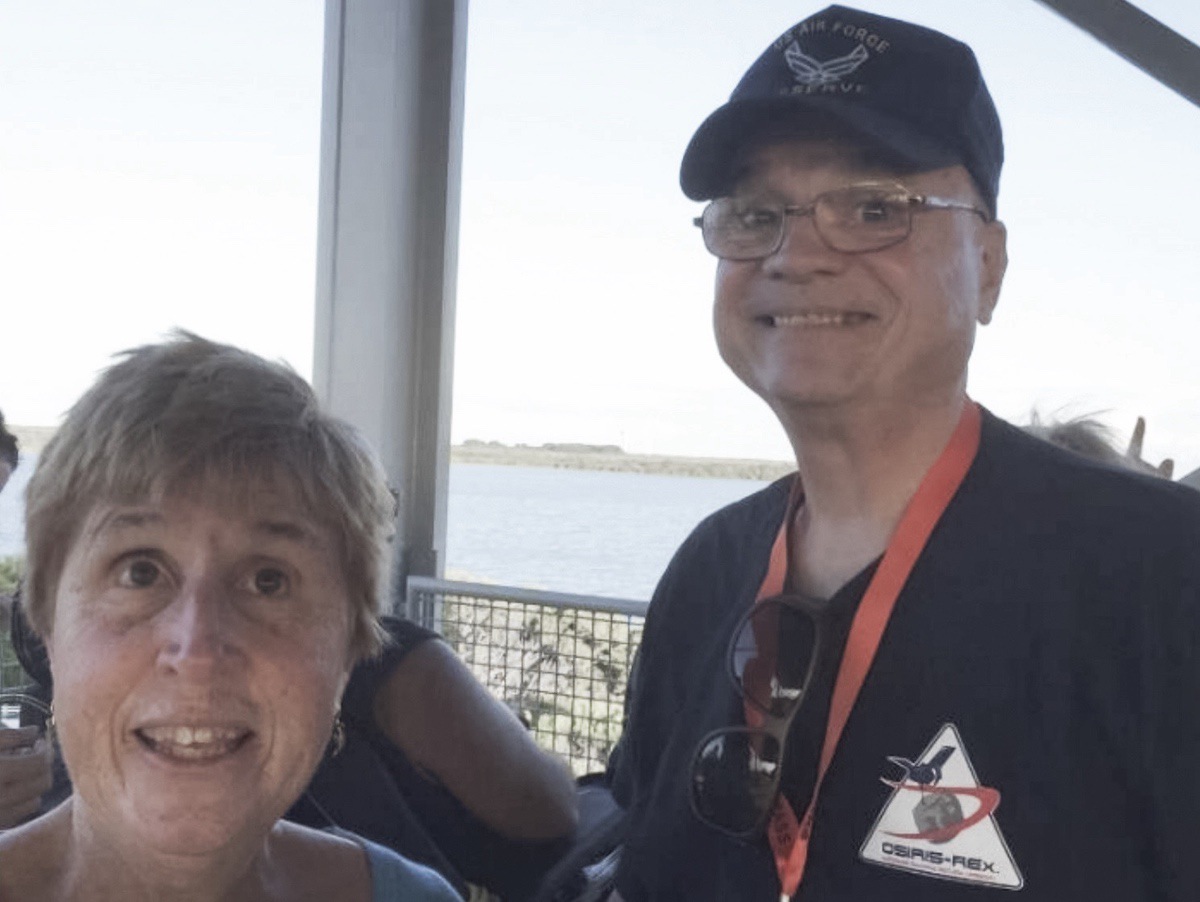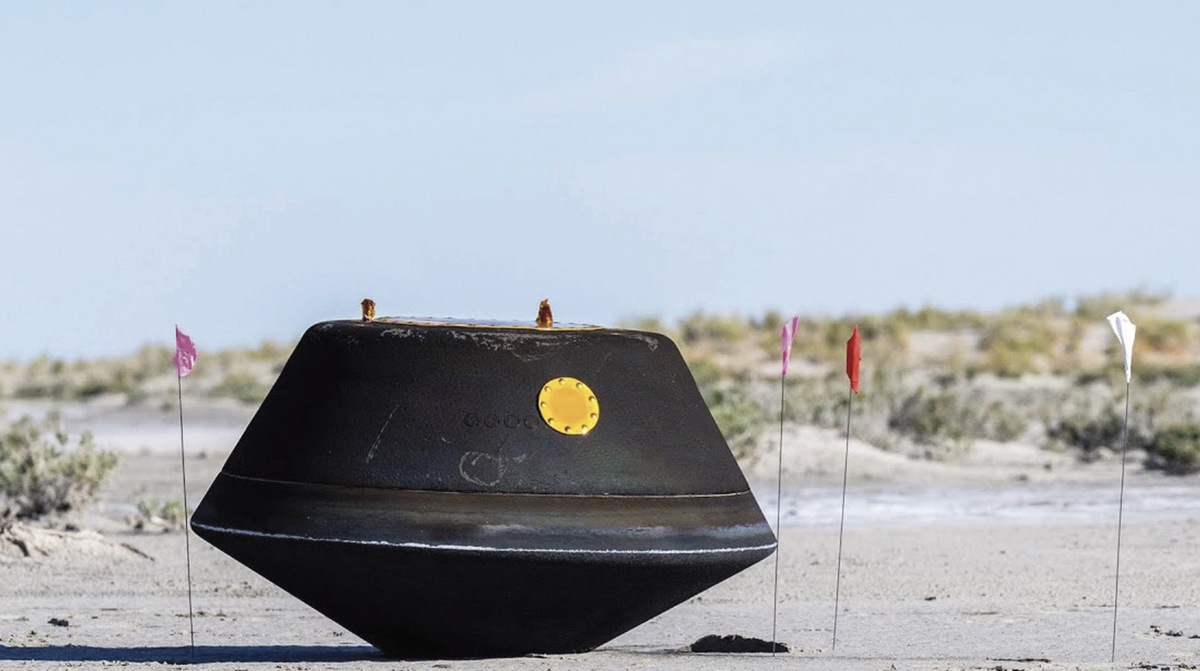Seven years ago, when this NASA spacecraft was launched, my wife Mary and I witnessed its ascent into space at the Kenedy Space Center and wished it “Godspeed.” Along with thousands of cheering visitors that day and many in the country watching TV, we excitedly viewed and heard the spectacular, perfect, and right-on-time liftoff.
Recently, on Sunday (September 24, 2023), this spacecraft successfully released its container holding the unique cargo of the asteroid’s small rocks into the Utah desert for awaiting scientists. Next, OSIRIS-Rex revved up its engines again from 63,000 miles above us and sent it quickly back into space – to chase after another asteroid. Its next mission is to carefully track and analyze the contents of the dangerous asteroid named Apophis, which Astronomers are concerned could impact the Earth in 2029!
I watched the TV intently and saw the spacecraft’s heat shield container burst through the atmosphere in a ball of flames (about 5,000 degrees F.) at over 27,000 mph. Finally, the parachute opened as planned, and the device safely landed on a desert floor. The crew of scientists quickly captured the space capsule, so it did not become contaminated by the dust and microbes of the Earth. (All the scientists and engineers interviewed on TV were excited about the potential scientific findings from these contents of Bennu. My Sun Day News has published 6 articles over 7 years about this Mission.)

Ken and Mary Kozy at the OSIRISRex launch in 2016.
Next, the capsule was whisked away by helicopter to a jet airplane for transport to the Johnson Space Center in Houston, where special “clean laboratories” are prepared to examine the rocks and dust. Scientists from around the USA and the world will carefully measure and study the regolith, estimated to be over 4 billion years old. The results will help us understand more about the formation of the solar system, the Earth, and the formation of life on the Earth. Congratulations to the worldwide OSIRIS-Rex teams led by Dante Lauretta (Principal Investigator), NASA, and the USA!
My special interest in OSIRIS-Rex is that NASA placed my eBook and pictures along with the submissions of over 7,000 others who responded in 2016 to a request for creative works to be placed in an electronic memory device on the spacecraft. After its asteroid tracking missions are completed, there is debate about deorbiting the spacecraft or having it remain in solar orbit almost forever. Perhaps, thousands of years from now, some future space explorers will discover the time capsule and open its “historical” contents which are about us all.
What did I submit to NASA for inclusion in the time capsule’s memory? It includes: a digital package of electronic photos and commentary about space exploration, new ideas for 7-Dimensional Communications, a prayer for the success of the Mission, and a multi-language eBook regarding the stars at the Bible’s Nativity Story. (For more details and background information, go to www.KenKozy.com, then click [eBook NASA Launch], or go to www.KenKozy.space, then click [Podcast 2, Inspirational Words and eBooks].) I wrote those inclusions in the peaceful environment of Sun City Huntley, Illinois.
This spacecraft’s second mission started September 24th and is called OSIRIS-APEX (APEX means APophis Explorer) because it will explore the asteroid Apophis continually until 18 months after the asteroid’s dangerously close approach to Earth on April 13, 2029. (For more information and photos of the new Teams, search “NASA OSIRIS-APEX”.)
“Godspeed OSIRIS-APEX” on your new Mission that is so vital to our safety on Earth.





